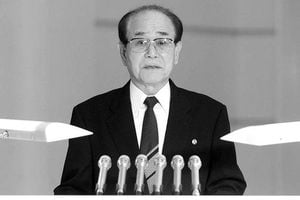On Friday, October 10, 2025, the newly established Greater Bengaluru Authority (GBA) convened its much-anticipated inaugural meeting, charting a new course for the governance of India’s tech capital. Presided over by Karnataka Chief Minister Siddaramaiah, the gathering brought together an impressive roster of 75 members, including MLAs, MPs, and MLCs, all tasked with steering the city’s future under a freshly minted administrative framework.
According to PTI and multiple local reports, the GBA was conceived as an umbrella body to coordinate civic efforts across five newly carved municipal corporations. This restructuring aims to address Bengaluru’s sprawling urban challenges—think mounting garbage, relentless traffic, and the all-too-familiar patchwork of civic services—by fostering stronger coordination and accountability among the city’s diverse agencies.
Chief Minister Siddaramaiah wasted no time in outlining his vision for a livable, efficient, and cleaner Bengaluru. During the meeting, he issued clear instructions: prioritize waste management, widen footpaths, maintain quality in public works, and, perhaps most crucially, improve coordination among civic bodies. "There can be no compromise on standards," Siddaramaiah warned, according to PTI, cautioning officials against getting too cozy with contractors. The message was unmistakable: the days of business-as-usual in Bengaluru’s civic administration are numbered.
Traffic congestion, a perennial headache for the city’s residents, took center stage in the discussions. Siddaramaiah directed the Transport Department to explore deploying more small feeder buses to improve last-mile connectivity for Metro commuters. The goal? Smoother, more reliable public transportation that meets the needs of a rapidly growing metropolis. He also called on departments like the Bangalore Development Authority (BDA), Bangalore Water Supply and Sewerage Board (BWSSB), Bangalore Electricity Supply Company (BESCOM), and Bangalore Metro Rail Corporation Limited (BMRCL) to work in lockstep with the GBA, ensuring that service delivery is seamless and responsive across the board.
But the meeting wasn’t just about technical fixes and bureaucratic coordination. It quickly became a flashpoint in Karnataka’s ever-volatile political landscape. The Bharatiya Janata Party (BJP) staged a boycott, refusing to participate in what they described as a divisive and unconstitutional move. BJP leaders argued that splitting Bengaluru into five corporations undermines the city’s unity—founded, as they pointedly noted, by Kempegowda—and violates the 74th Constitutional Amendment, which empowers urban local bodies. R Ashoka, a prominent BJP leader, didn’t mince words, claiming the restructuring "undermines elected mayors and centralizes power with the Chief Minister." He also criticized the process as "rushed and unfair," citing the last-minute nature of the meeting invitation.
While the BJP’s absence sparked a political row, the Congress government doubled down on its message of unity and reform. Deputy Chief Minister DK Shivakumar stepped forward to clarify the GBA’s expanded mandate. He explained that the authority has now taken over key planning powers from the BDA, including oversight of Transferable Development Rights (TDR). This move, he argued, is designed to streamline decision-making and cut through the notorious red tape that often bogs down Bengaluru’s urban development.
Perhaps the most tangible outcome of the meeting was the announcement of increased spending limits for local officials—a move hailed by the Congress as a "historic step to decentralise governance and fast-track development." According to the new guidelines, mayors will now be able to authorize projects up to ₹10 crore, up from the previous ₹5 crore. Standing Committees see their limit raised from ₹3 crore to ₹5 crore, while Municipal Commissioners’ spending authority jumps from ₹1 crore to ₹3 crore. Shivakumar emphasized that these changes would "give more power and money to local bodies," enabling them to respond more swiftly to the city’s pressing needs.
Still, the opposition’s concerns linger. Critics argue that the creation of the GBA and the division of Bengaluru into five corporations could dilute the power of elected representatives and make the system less accountable to ordinary citizens. "This move divides a city that has always been united," BJP leaders asserted, warning that the new structure risks creating more bureaucracy rather than less. The Congress, for its part, insists that the reforms are necessary to bring Bengaluru’s governance into the 21st century, with faster, more localized decision-making and a clear chain of command.
For ordinary Bengalureans, the stakes are high. The city, often dubbed India’s Silicon Valley, has seen its population and infrastructure demands explode in recent years. Overflowing garbage bins, traffic snarls that stretch for miles, and uneven delivery of basic services have become daily realities for many. The GBA’s mandate—to act as a central coordinating body bridging the five municipal corporations—could, if implemented effectively, mark a turning point in how the city is managed.
Of course, the proof will be in the pudding. Can the GBA deliver on its ambitious promises? Will the new spending powers and streamlined planning authority translate into cleaner streets, better buses, and more responsive civic services? Or will the political squabbles and bureaucratic inertia that have long plagued Bengaluru continue to hold the city back?
One thing is certain: the launch of the GBA has set the stage for a new era in Bengaluru’s governance. Whether this experiment in urban administration succeeds or falters will depend not just on the vision of its leaders, but on their ability to work together, rise above partisan divides, and keep the city’s 13 million residents at the heart of every decision.
The coming months will be a test of political will, administrative skill, and, perhaps most of all, the city’s capacity for reinvention. For now, Bengaluru watches—and waits.



